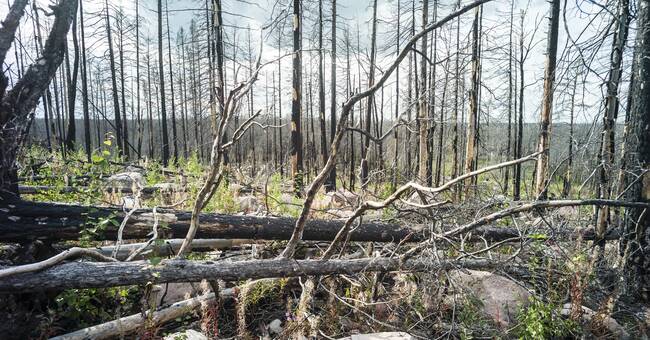Small blades of grass sprouted up from the black-burnt ground, and leaves sprouted from burnt birch stumps.
Today, the vegetation is very different from the black-burnt soot cover that met the visitor immediately after the fire.
- Today, the impression is a green sea of growing deciduous trees with protruding black tree trunks, says Lena Gustafsson, one of the researchers behind the study, in a press release.
The most common species to date at the test points in the nature reserve Hälleskogsbrännan where SLU follows the development is milk thistle (rallarros), followed by aspen and birch.
According to the study, deciduous trees will become increasingly dominant and the reserve will eventually become the largest deciduous forest area in the country below the mountain birch forest.
One of the sample areas where the vegetation was examined.
Photo: Lena Gustafsson, SLU
The vegetation returned quickly after the Västmanland fire here a picture from 2016. Photo: Lena Gustafsson, SLU
Picture from the same area 2019. Photo: Lena Gustafsson, SLU

